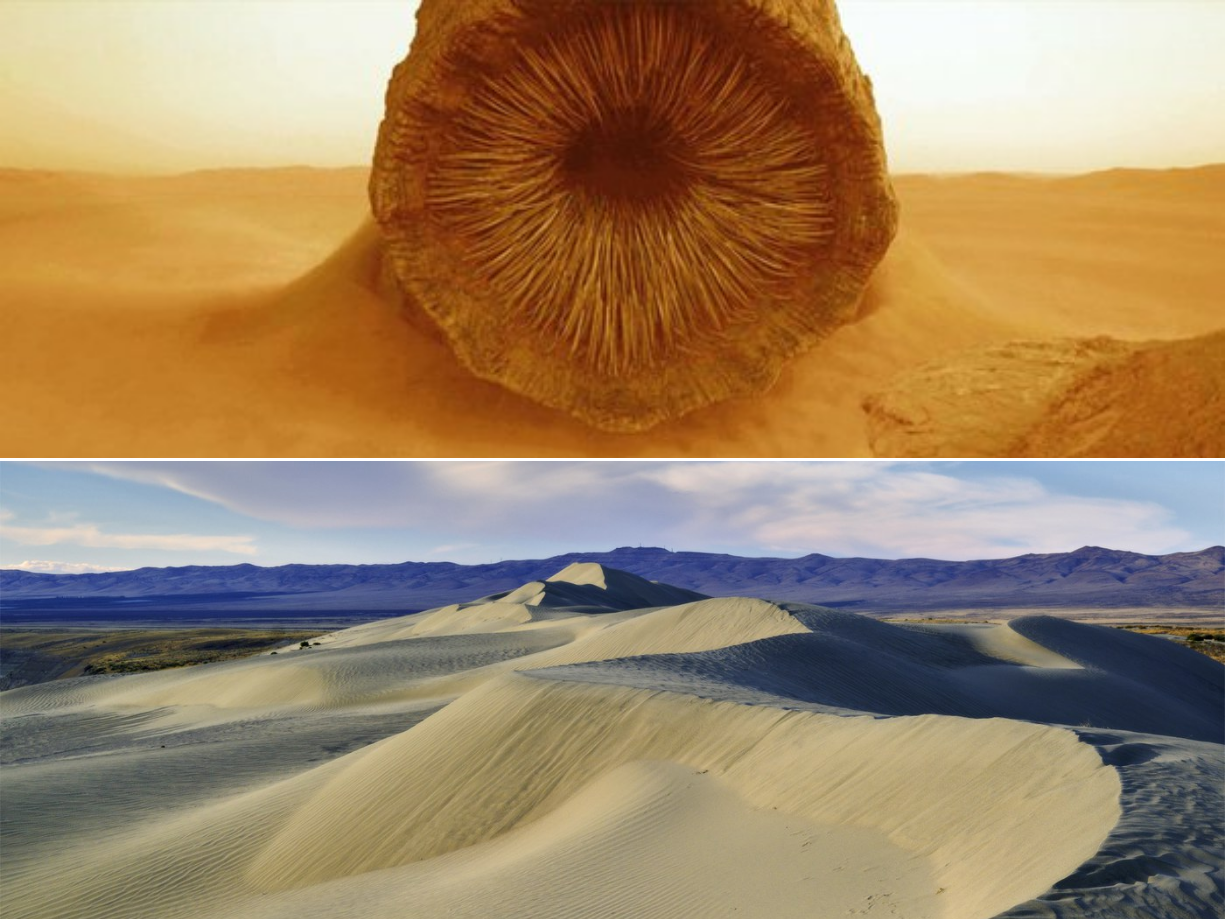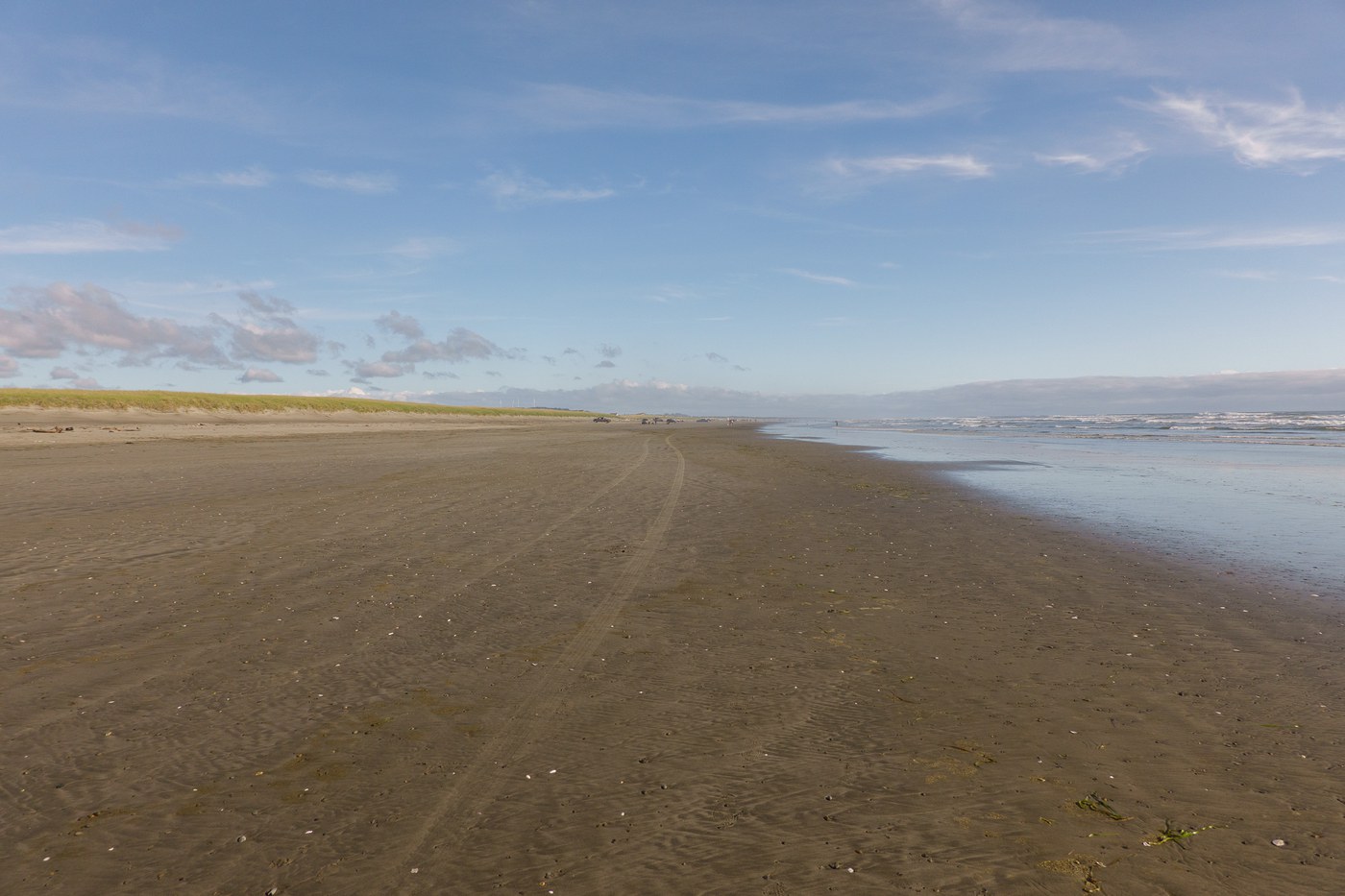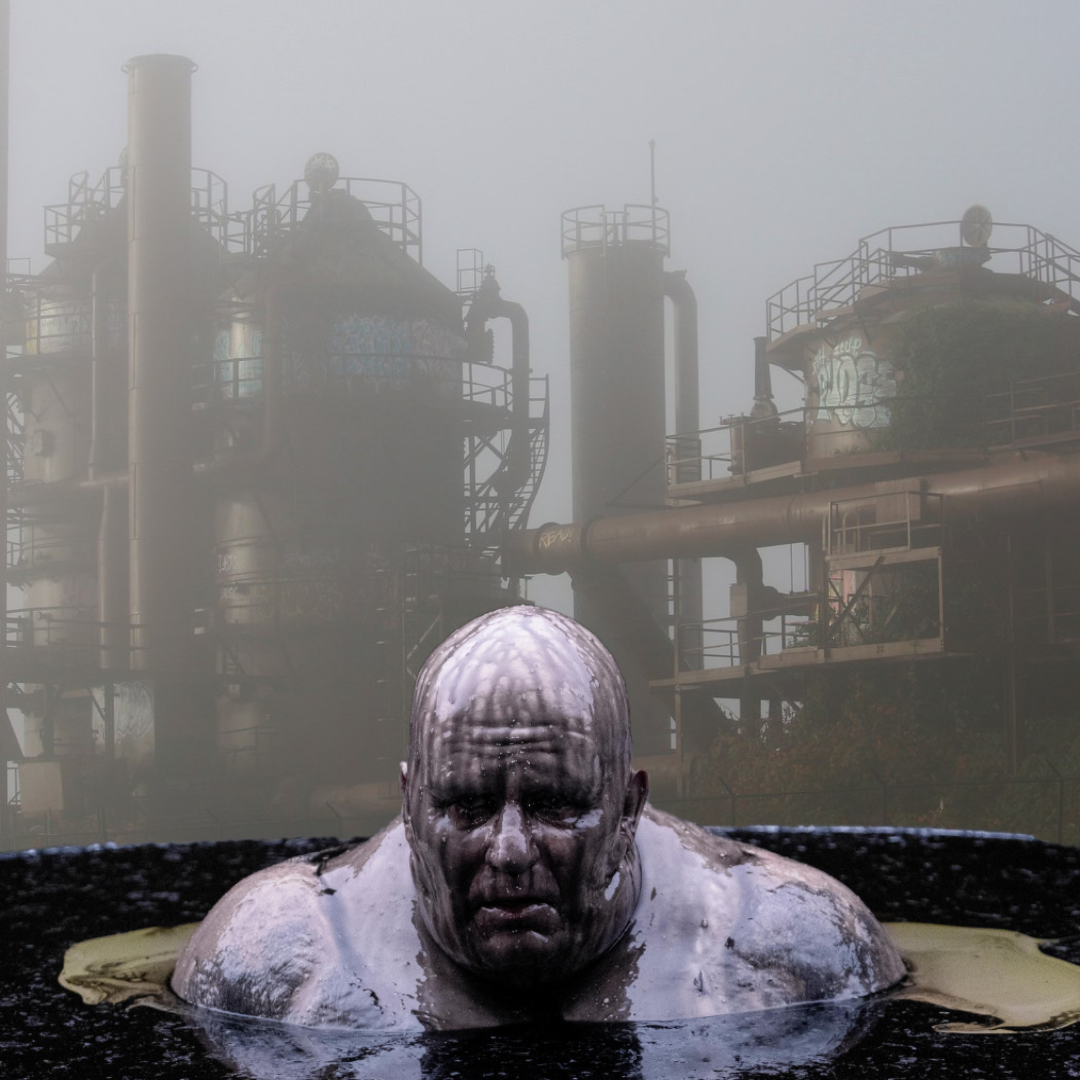The Hikes Must Flow: Hike the "Duniverse" of Washington
After nearly two and a half years, Dune: Part Two is set to premiere on March 1, 2024. Washington doesn’t have giant sandworms (as far as we know), but it does have diverse landscapes comparable to some of our favorite settings from the films. Walk without rhythm with us as we explore Washington’s own sand dunes and otherworldly landscapes, inspired by Frank Herbert’s Duniverse.
Unfortunately for hikers, stillsuit technology has yet to advance. In the meantime, remember to stay hydrated and protect yourself from the sun.
Arrakis (Dune)
Arrakis (AKA “Dune”) is a desert planet and the main setting for the Dune films. It’s the only known place to harvest Melange (“the spice”), a psychoactive and highly addictive drug that grants its user extended lifespan and heightened sensory perception. Besides being home to the universe’s crop of spice, it’s also home to the Fremen (the local people of Dune) as well as giant sandworms.
Dunes of Arrakis
White Bluffs - North
Location: Central Washington — Tri-Cities
Length: 7.0 miles, roundtrip
Elevation Gain: 500 feet

Walk without rhythm and you won't attract the worm. Photo by HaroldC3
Looking to explore the desert of Arrakis? Look no further than this Tri-cities gem. Luckily for hikers visiting Hanford Reach National Monument, the only thing worming through this landscape is the Columbia River.
> Plan your hike to White Bluffs - North using WTA’s Hiking Guide
Juniper Dunes Wilderness
Location: Central Washington — Tri-Cities
Length: 15.0 miles, roundtrip
Elevation Gain: 300 feet

No ornithopters or Harkonnen forces here: just beautiful wilderness nestled aside an OHV area. Photo by jrdearman
Just like the Fremen survive deep within the sands of Arrakis, so does Juniper Dunes Wilderness survive inside an off-road OHV park, which visitors must hike through to reach the wilderness gate. Fear-not (for fear is the mind-killer): this 7,140-acre wilderness area is enclosed by a fence, preserving its wildlife and vegetation.
> Plan your hike to Juniper Dunes Wilderness using WTA’s Hiking Guide
Twin Harbors State Park
Location: Olympic Peninsula — Olympia
Length: Varies
Elevation Gain: Minimal

We don't have control over "the voice", but if we did, we'd command you to take a hike at Twin Harbors State Park. Photo by ejain
Twin Harbors State Park might not house a mountain of Spice to fund your galactic empire, but it does offer fun wildlife viewing and beachcombing. These flat, sometimes grass-covered dunes are great to explore with the beach lovers in your life.
> Plan your hike to Twin Harbors State Park using WTA’s Hiking Guide
Caves of Arrakis
Ape Caves
Location: South Cascades — Mount St. Helens
Length: 2.8 miles, roundtrip
Elevation Gain: 350 feet

Fremen thrive in the cave systems of Arrakis: do the same at Mount St. Helens' Ape Caves. Photo by Gavin Danapong
Nothing quite says “subterranean refuge from land ravaged by forces of nature” like an exploration of the Ape Cave. The upper and lower caves are lava tubes, crafted over time by the same volcanic activity that destroyed Mount St. Helens in 1980 harder than the Sardaukar destroyed the Atreides forces on Arrakis.
The Ape Caves can be as popular as your favorite theater at a midnight release; Reservations are required between May and October. Make reservations here.
> Plan your hike to the Ape Caves using WTA’s Hiking Guide
Crawford State Park - Gardner Cave
Location: Eastern Washington — Selkirk Range
Length: 1.0 miles, roundtrip
Elevation Gain: 200 feet

Fremen dwellings (sietches) are preserved for generations underground, much like Gardner Cave. Photo by Pribbs
Navigating the surface of Arrakis can be harsh. Looking for refuge in northeastern Washington? Check out Gardner Cave in Crawford State Park. The cave is only accessible via a guided tour, offer Thurs-Mon at 10 a.m., noon, 2 p.m. and 4 p.m. Call the park directly to book at (509) 238-4258. Open seasonally from May 15 through September 15.
> Plan your hike to Crawford State Park - Gardner Cave using WTA’s Hiking Guide
Sun Lakes-Dry Falls State Park - Umatilla Rock via Monument Coulee
Location: Central Washington — Grand Coulee
Length: 5.0 miles, roundtrip
Elevation Gain: 100 feet

Rock outcroppings like at Sun Lakes-Dry Falls State Park are the perfect refuge: plenty of places to hide from worms and Harkonnen forces alike. Photo by Palü and Tuoi
Sandworms aren’t just megafauna of Arrakis — they’re forces of nature that shape the very landscape. Similarly, the Great Missoula Flood shaped the grand coulee into a geological wonderland. Nowhere is this better on display than at Sun Lakes-Dry Falls State Park. Check out Umatilla Rock, as well as the park’s labyrinth of basalt pillars.
Sun Lakes-Dry Falls State Park experiences winter road closures. Even if gates are closed, hikers can still hike to any trailhead. Check the Hiking Guide link below for more info.
Caladan
Caladan is an oceanic planet and the ancestral seat of House Atreides. It has a lush ecosystem that juxtaposes that of Arrakis, and is the birthplace of Dune’s protagonist, Paul (aka Muad'Dib).
Third Beach
Location: Olympic Peninsula — Pacific Coast
Length: 3.6 miles, roundtrip
Elevation Gain: 280 feet

Family moving because your dad got a new job in the desert? Brood to your heart's content at Third Beach. Photo by HoppieFroggie
Looking for a trail with a spooky aura? No need for the Hans Zimmer soundtrack — simply visit Third Beach! This short, but steep hike melds mountains with shore along one of Washington’s most stunning coastlines. If the tide is low, consider tidepooling here and at nearby beaches.
> Plan your hike to Third Beach using WTA’s Hiking Guide
Camano Island State Park
Location: Puget Sound and Islands — Bellingham Area
Length: 2.6 miles, roundtrip
Elevation Gain: 200 feet

Bluffs, driftwood and shoreline on the south end of San Juan Islands. Photo by Eric & KJ
Forest walks, birding and beachcombing: three things you can do at Camano Island State Park (and Caladan) that you cannot do on Arrakis. Hike through its lush Madrona forests and look for eagles along the seaside — just remember your Discover Pass!
> Plan your hike to Camano Island State Park using WTA’s Hiking Guide
American Camp and South Beach
Location: Puget Sound and Islands — San Juan Islands
Length: 2.7 miles, roundtrip
Elevation Gain: 167 feet

Name a more peaceful place to study the diplomatic ways of the Corrino Imperium. We'll wait. Photo by Crystalpd
While the Atreides and Harkonnens grapple for control of Arrakis, American and English colonizers once struggled for control of San Juan Island. Luckily for modern day hikers, the historic American Camp and South Beach is still here to enjoy years later. Whale watch from shore, or visit English Camp to hear the other side of the story.
> Plan your hike to American Camp and South Beach using WTA’s Hiking Guide
Giedi Prime
Giedi Prime is a largely industrialized planet and the ancestral seat of the Harkonnens. We didn’t see much of it in Dune: Part One, but keep your eyes out for more appearances of the planet in Part Two.
Point Defiance Park
Location: Puget Sound and Islands — Seattle-Tacoma Area
Length: 5.0 miles of trails
Elevation Gain: 200 feet

Dune Peninsula pays homage to Frank Herbert, creator of Dune. Photo courtesy of Metro Parks Tacoma
Want something Dune-specific, but don’t feel like a long walk in the desert? Check out Dune Peninsula at Point Defiance Park to get your fix. The park offers wildlife viewing, a network of ADA accessible paths and even a sandworm statue. Metro Parks Tacoma’s vision for the park is aligned with the vision of Dune itself: to transform or reimagine the seemingly uninhabitable into an oasis.
> Plan your hike to Point Defiance Park using WTA’s Hiking Guide
Gas Works Park
Location: Puget Sound and Islands — Seattle-Tacoma Area
Length: 1.0 mile of trail
Elevation Gain: Minimal

Rest and relax at Gasworks, only a short walk from great shopping, dining and paddling. Photo by wafflesnfalafel
Nestled on the northern shore of Seattle’s Lake Union, Gas Works Park is a popular destination year round for Seattleites. The park’s major feature are the old remains of a coal gasification plant, but these days it is best enjoyed for picnicking, walking and photographing. Don’t expect to run into any Harkonnens here, but do expect to see some fun watercraft buzzing across the lake.
> Plan your hike in Gas Works Park using WTA’s Hiking Guide
Frank Herbert
Frank Herbert was a celebrated science-fiction writer mostly notably known for authoring the Dune series. His science fiction work is lauded for its themes of ecology, prescience, psychedelics, human evolution, and politics.
Herbert was born in Tacoma, attended University of Washington and lived in Seattle, as well as the Kitsap and Olympic Peninsulas, for many years. Concerns about the Asarco Tacoma Smelter Site, located where Dune Peninsula now stands, inspired him to write Dune in 1965. His experiences in the Oregon Dunes would later inform the creation of Arrakis itself, tying the Pacific Northwest's landscapes directly to the setting of his environmental sci-fi best seller.
As you hike, keep Frank Herbert’s philosophy in mind: be kind to the environment so we can live harmoniously with it, beware your heroes and always be mindful of water consumption.
So get out, leave a trip report and make like a stillsuit — leave nothing behind!

